In the past ten years or so, the animal feed industry has developed rapidly in China. Many multinational animal feed companies and large group feed production companies have built or purchased many large and medium-sized automated animal poultry feed production lines of a certain scale. The maintenance and management of automatic animal poultry feed processing line has gradually moved from passive maintenance management to modern equipment management.
In the past, the animal poultry feed processing equipment management model that centered on equipment managers and relied too much on the knowledge and experience of the managers often caused equipment management errors due to the outdated knowledge and one-sided experience of the managers, while the modern animal poultry feed making equipment management was developed by many experts.
Based on the animal feed equipment management system of the animal poultry feed mill factory, the equipment management personnel of the poultry animal feed production factory can learn and use the system, and can improve and innovate according to the characteristics of the equipment of the poultry feed factory, so that the equipment management can continuously reach a new level and level. Below RICHI will briefly introduce the application practice of modern equipment management, I hope it will be helpful to you.
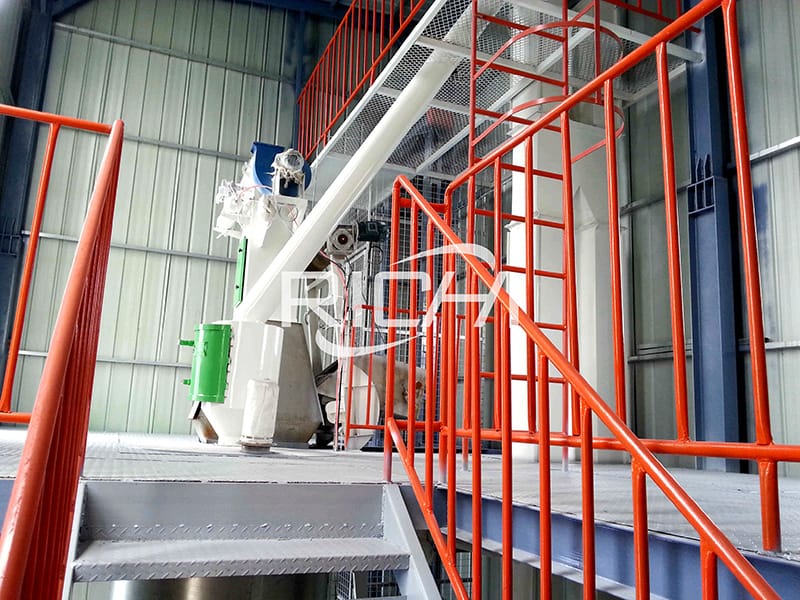
1. Advanced animal poultry feed making equipment and how to keep the poultry feed production equipment advanced for a long time?
It can keep the manufactured products at the forefront of the market within a certain period of time, and can produce products that are constantly changing market needs, equipment with stable performance and advanced poultry production equipment. First of all, when we purchase equipment, we try to purchase equipment with more mature and new technologies as much as possible. We must be able to foresee that the equipment we purchased will be advanced and have its own characteristics in the next few years. Then to maintain the advanced nature of the poultry feed processing equipment mainly depends on equipment management personnel, maintenance personnel and equipment operators.
If the poultry feed maker equipment management personnel have a strict and down-to-earth working attitude, a strong spirit of innovation, and a sense of perseverance and courage. Then they can work hard to study and improve the old equipment in accordance with the ever-changing product needs to continue and create new life. If the equipment maintenance personnel love the maintenance work and are willing to solve the difficulties, the stability of the equipment will be greatly improved. If the equipment operators are proficient in the principles and performance of the equipment, are good at daily maintenance of the equipment and strive to overcome the weaknesses of the equipment in the animal poultry feed manufacturing process, and give play to the strengths of the poultry animal feed processing equipment, they will be able to produce top-notch poultry feed products. This will show that the equipment is always advanced throughout its life cycle.
2. Scientific animal poultry feed equipment management
In order to remain undefeated in the fierce market competition. In terms of equipment management, poultry chicken feed production equipment must be used as efficiently as possible. With the latest concepts, we are constantly pursuing zero failure rate of equipment and low maintenance costs. At the same time, a series of equipment management systems and methods need to be established. Large group companies are generally formulated by the group poultry feed making company's poultry feed equipment management experts or by the equipment management personnel of many chicken poultry feed mill factories. Its content is generally based on the time, frequency and analysis of poultry feed production machine inspection; equipment lubrication cycle and time; equipment cleaning cycle and time; equipment maintenance and adjustment mainly, and its core is generally mainly preventive maintenance, supplemented by emergency maintenance the rules.
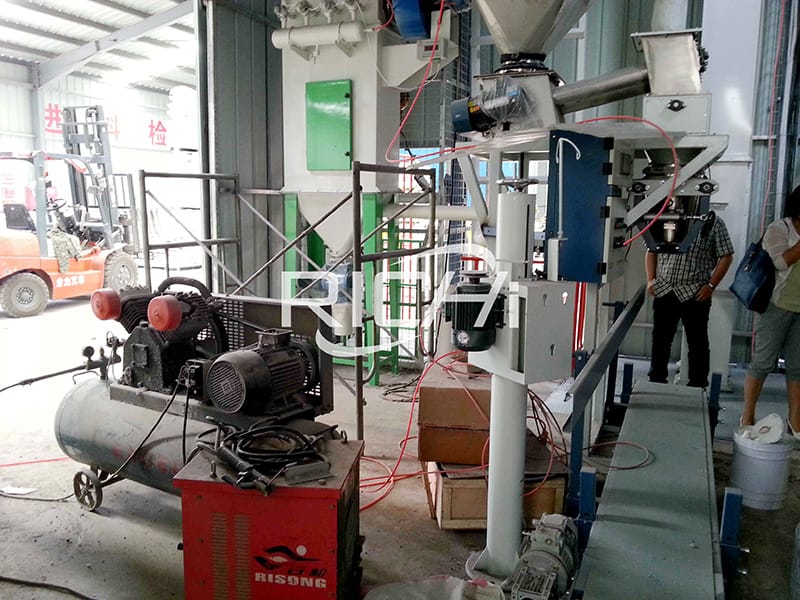
(1) Equipment cleaning, cleaning and inspection
Poultry animal feed making machine cleaning refers to the cleaning of equipment and floor surfaces related to their work by each employee engaged in production before work. There must be a cleaning record card in a conspicuous place in the cleaning area, and the cleaning requirements, cleaning cycle and cleaning person must be indicated on it. Each cleaning must record the cleaning time and sign. Its purpose is to obtain timely external information about operating equipment and maintain a good working environment. A good working environment will increase the enthusiasm of employees and promote the safety of the factory. The cleaning of equipment is the cleaning of the inside of the equipment within a specified period. It is best to have a cleaning record card on each equipment. The clearing record card should indicate the clear responsible person, cleaning method, cleaning requirements and cycle. For each cleaning, the cleaning time and related content should be recorded in time and reported to the equipment or production supervisor. Different equipment has different cleaning cycles. For example, the cooler generally needs to be cleaned when changing to different types, and the operator of the mixer enters the cleanup every week. The conditioner of the ring die horizontal animal poultry chicken feed pellet making machine is cleaned every 20 shifts or so. Generally, most aniaml feed making equipment is cleaned once a month. The purpose of cleaning the equipment is to ensure the stability of the poultry feed quality and obtain information on the internal wear and tear of the equipment.
Equipment inspection includes daily feed equipment inspection and monthly feed equipment inspection. The daily equipment inspection refers to the inspection from the outside of the poultry feed manufacturing equipment. Inspectors must go to each device every time to observe the condition of the device by watching, listening, and touching and record it in time. It is usually done by maintenance personnel or equipment management personnel, and different maintenance or management personnel can be used to perform each time to obtain different key information. The inspection time for each inspection depends on the size of the factory, generally about 0.5 to 2.5 person-hours/day.
Monthly feed equipment inspection means that the equipment management personnel work out the inspection items for each equipment in the animal poultry feed factory based on the characteristics of the equipment in the animal feed mill factory for poultry feed and the system stipulated by the experts for each equipment. Its main content includes: the specific items of each equipment inspection and the standards required by the items, the inspection time and inspection cycle of each item. This work is generally performed by the equipment management personnel to guide the maintenance personnel. The monthly equipment inspection time can be controlled at 20 to 70 person-hours/month according to the size of the factory.
(2) Daily maintenance work record
Daily maintenance work record refers to the maintenance personnel accurately and timely record the work content in each working period, the parts used in the maintenance, and the classification of the work nature. Generally can be divided into preventive maintenance and emergency maintenance that affects production. Every day, the equipment management personnel must summarize the obtained information and enter it into the equipment management manual for future search and statistical analysis of monthly production and equipment management, and provide information for the maintenance plan for the second day. In addition, equipment information will be provided to the weekly poultry feed peocessing equipment production meeting.
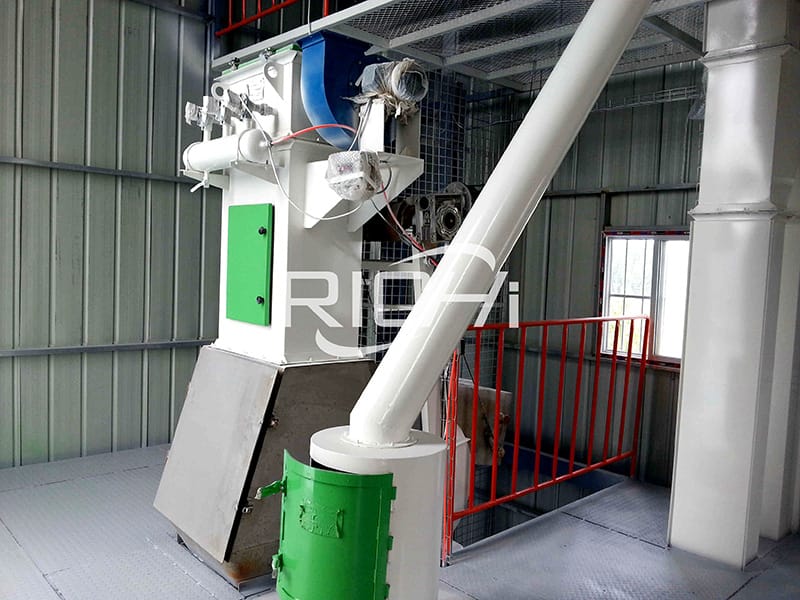
(3) Lubrication and adjustment
Lubrication can generally be divided into regular lubrication and special lubrication after equipment inspection. Regular lubrication is generally based on the requirements of the equipment manual, the advice of equipment experts, the intensity of use of the animal feed making machine in the poultry feed manufacturing plant and the work experience of the manager. Generally, annual lubrication and quarterly lubrication can be formulated. After daily and monthly inspections, when some equipment is worn or heats up severely, the equipment manager requires special lubrication of the equipment and adjustment of necessary equipment parts based on work experience.In order to prevent the deterioration of the equipment from accelerating. Some high-temperature or heavy-duty poultry feed maker equipment must be specially lubricated. For example, the roller bearings of the granulator must be lubricated once per shift, and the spindle bearings are best lubricated once a week. Generally, general industrial base grease is used. It is best to lubricate the spindle bearing of the poultry feed grinder machine once every two weeks, and aluminum disulfide grease is generally used.
(4) Poultry animal production equipment analysis meeting
Production and equipment management personnel must analyze and summarize the production and equipment status weekly or monthly. Summarize the completion of the work plan last week or last month and explain the reasons for not completing the plan. Develop specific work directions and specific contents of maintenance and preservation plans for next week or next month. Participants must put forward their own views and allow different views to collide so that the manager can finally determine the best plan. Regardless of whether the participants' opinions differ from the decision, the decision must be strictly implemented. Of course, each manager must send the weekly or monthly work report to the manager of the department, and at the same time copy to the manager of other related departments and the manager or leader of the higher level. Its purpose is to promote the accuracy of their respective work and ensure the smooth flow of information channels.
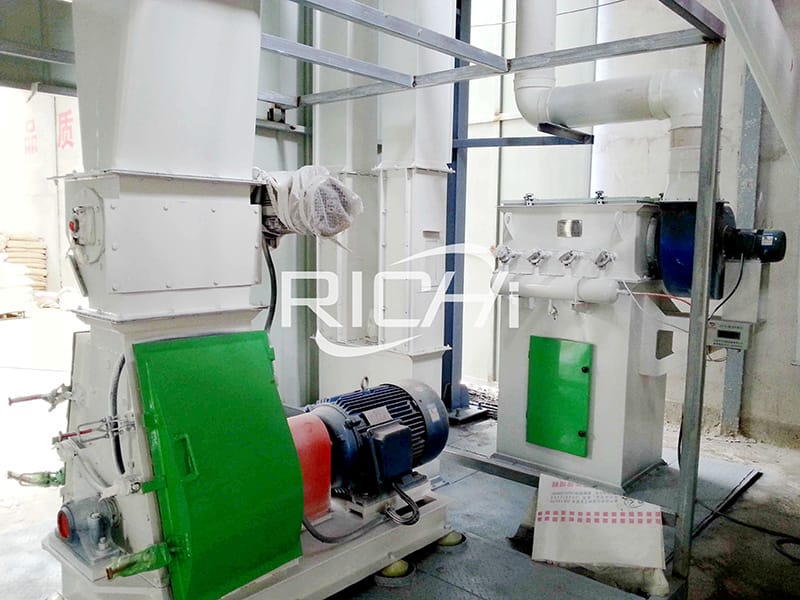
(5) Spare parts management and maintenance support
The poultry feed production equipment manager should promptly capture the information needed for spare parts from the daily maintenance records and morning maintenance meetings, daily walking equipment inspections, weekly and monthly production equipment meetings, and spare parts safety stocks. Prepare the plan in time to ensure the smooth completion of various tasks in a timely manner.
①The principle of spare parts inventory
a. Commonly used spare parts, wearing parts, spare parts with a long purchase period, and foreign imported parts must have a certain safety stock. Make purchase plans and applications for parts that are below the safety stock volume monthly or weekly. Supplement as soon as possible to avoid a long period of downtime due to the lack of accessories that cannot be repaired;
b. Accessories that are not commonly used, have lower prices, and can be purchased. Can also be used as a small amount of inventory;
c. For accessories that are not commonly used at higher prices but can be purchased in time, you can contact multiple distributors so that they can be delivered in time when needed.
②Spare parts classification and purchase of spare parts are divided into bearings, electrical, electronic, hardware, machinery, computers, machine screens, ring dies, pressure rollers, belts, nylon buckets, plastic products, Sewing accessories category. General accessories can be purchased by category. It is best to have two animal poultry feed machinery suppliers for each category, so that prices can be compared at any time. Suppliers with regular cooperation can deliver goods first and pay later, and the quality of accessories is relatively stable. But the selected supplier, we had better visit at regular intervals to check the stability of the price and quality of the accessories provided.
In the case of a small purchase of accessories, companies with financial strength can use group procurement to ensure the quality and price of the accessories. For accessories that are small in quantity and low in price, quality is the most important thing. In the negotiation process of purchasing accessories, after negotiating with many manufacturers, people with certain purchasing skills can generally know the approximate production and sales price of the accessories.This is very helpful for the bulk purchase of ring dies, pressure rollers, crushing rollers, screens, and hammers. For large group companies, it is best for each factory to exchange information on the procurement status of parts and components once a month, and copy it to the corresponding leader, so that each feed factory can get the best price, rich information and the most stable quality. The products can increase the transparency of work and promote mutual work.
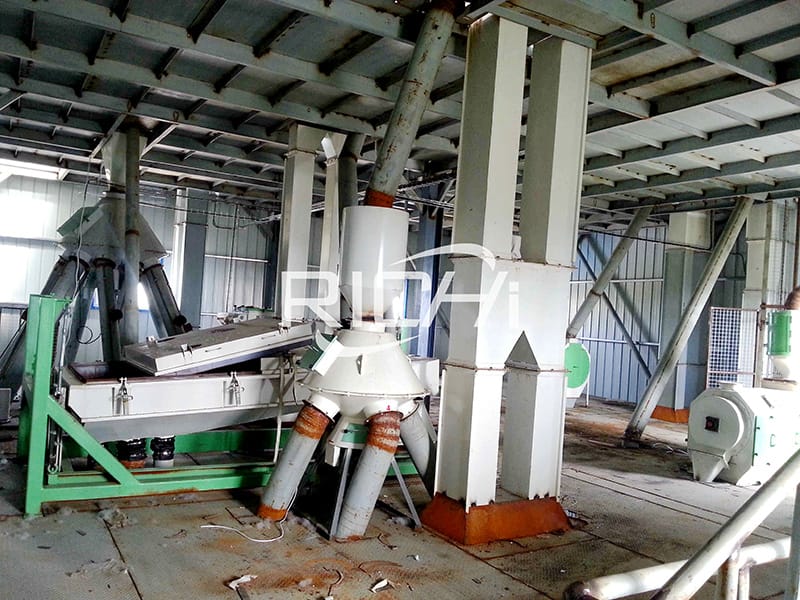
(6) Maintenance actions
With sufficient information, adequate accessories and a complete preventive maintenance plan. We have laid a solid foundation for the maintenance and preservation actions next week and next month. Preventive maintenance should be arranged during non-production hours as far as possible. This can improve the work efficiency and personal safety of maintenance personnel. After the repair is completed, try to run the repaired equipment as much as possible to ensure that there are no problems during the formal production and normal production will not be affected. During production shutdown and maintenance, maintenance plans must be formulated thoroughly. Production and maintenance must be closely coordinated. Before maintenance, repair parts and related personnel must be in place, turn off the power switch, lock, and hang up the maintenance card to ensure quality Under the premise of safety of personnel, the maintenance time shall be shortened as much as possible. After the repair is over, it is best for relevant personnel to be present to test the equipment. After the equipment is in normal production, the repair is considered to be completed. In this way, the equipment can be improved and restored before it deteriorates.
(7) Good operating skills ensure the normal operation of the animal poultry feed processing machinery
Operators are one of the guarantees for the normal operation of good products and equipment. To produce high-quality products, there must be diligent and practical operators who abide by the rules and systems. The training of operators is not just a few months of training when entering the factory, but a lifelong training. Production and equipment managers should turn 80% of their orders into training to let them know not only to master poultry feed production and equipment knowledge and technology in practice, but also to master relevant production and equipment knowledge theoretically, and let them Continuously develop from practice to theory, and then from theory to practice. In order to make the employees of the production department continue to improve, it is very necessary to conduct cross-job training. Cross-job training can make employees feel a certain amount of pressure, promote employees to generate internal work motivation, and stimulate employees to generate innovative awareness. Every production employee is in this process. Able to master a variety of operating skills. At the same time, managers must create a good working environment for them. Let them continue to pursue high-quality and high-efficiency production; let them dare to challenge quality, output and equipment maintenance every day! The policies formulated by managers must also allow them to make continuous progress and success. In this way, our equipment will reflect the true value.
(8) Assessment of the maintenance department
In order to promote the efficiency of maintenance work and ensure the good operation of poultry animal feed manufacturing equipment, the maintenance department must conduct necessary assessments. The assessment is mainly from 3 aspects:
①The ratio of the time during which production is interrupted to the entire production time due to sudden equipment failure each month. For factories with better equipment conditions and better management, it is generally 4% to 8%. Generally, it is 9% to 15% in small and medium-sized factories. Its purpose is to ensure the continuous operation of the machine for making poultry feeds;
②The ratio of the monthly preventive maintenance hours of the maintenance department to the total maintenance hours of the maintenance department. Well-managed factories should be around 70% (the maintenance plan must be handed over to the higher-level leadership on the 1st of each month), the purpose is to ensure the long-term stable operation of the poultry feed maker machine;
③In the monthly maintenance work, the cost of maintenance parts and the efficiency of maintenance personnel must be controlled (except for equipment modification costs). It is normal that the direct cost of general maintenance accounts for about 10% of the total poultry animal feed production cost. These aspects can be linked to the salaries and honors of maintenance personnel to promote work. The content of the assessment and the assessment of other animal feed plant factories of the group company must be reported to the higher level at the same time every month, the purpose of which is to keep the maintenance department moving forward.


